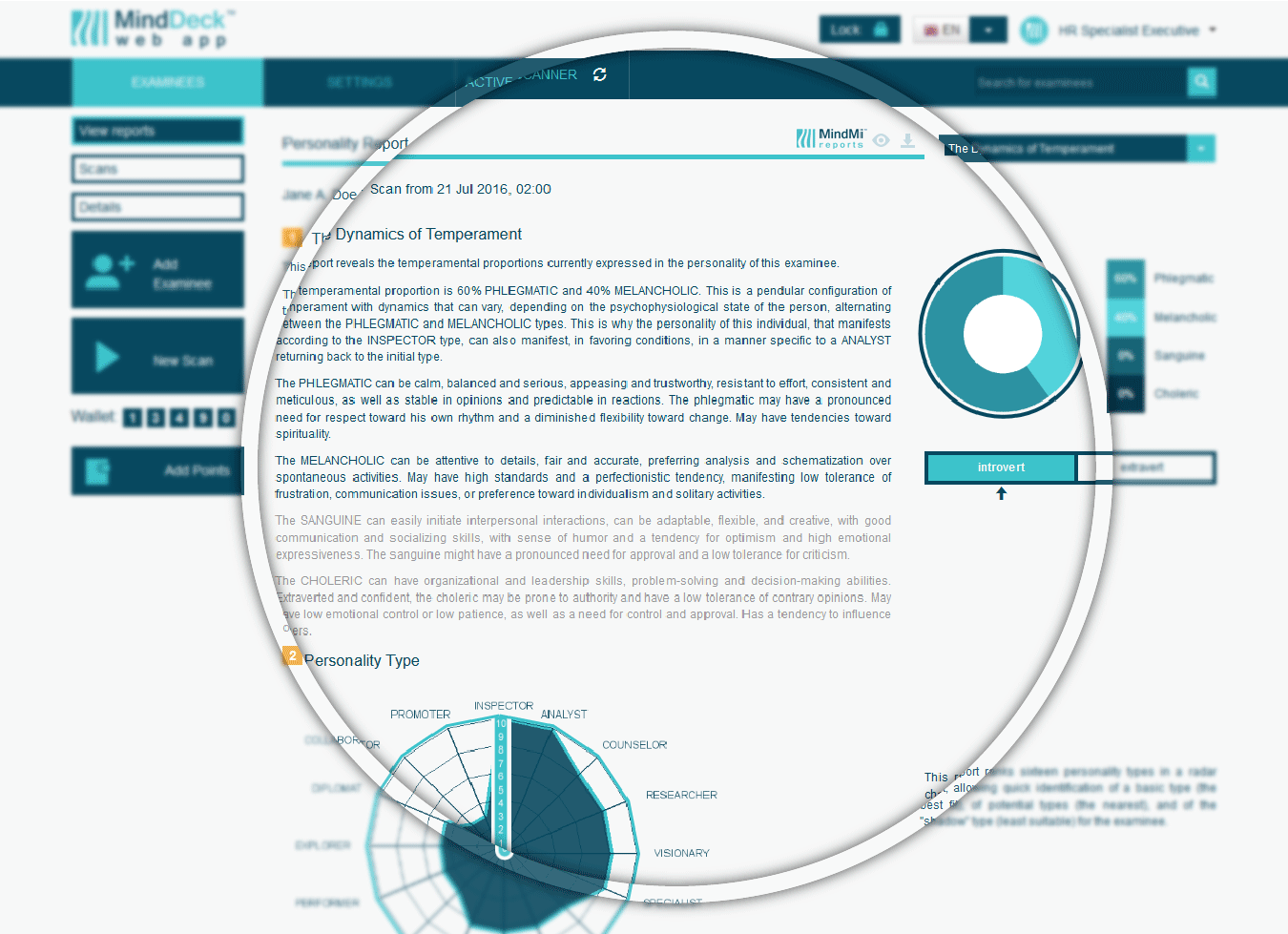Personality Report
This report focuses on five main areas: the dynamics of temperament, personality type, tendencies, abilities and aptitudes as well as cerebral frequencies.
View report Watch videoThis report focuses on five main areas: the dynamics of temperament, personality type, tendencies, abilities and aptitudes as well as cerebral frequencies.
View report Watch video
Regarding the dynamics of temperament, this report reveals the proportions of temperament types that are currently expressed in the personality of an examinee.
This report ranks 16 personality types in a radar chart allowing quick identification of a basic type (the best fit), of potential types (the nearest) and of a “shadow” type (least suitable) for the examinee.
The opposite personality type, or the “shadow”, reflects a set of opposite characteristics of the examinee. Some of them may be found in the main configuration of the person’s temperament, but for optimal personal development it may be beneficial to improve the negative aspects of the “shadow” type.
The examinee could benefit from enhancing negative aspects specific to the “shadow” type in order to optimize his specific configuration of temperament, if this is deemed useful. If the person believes that the main personality type identified does not favor him or her, it is recommended to develop specific characteristics of an appropriate potential type.
In the tendencies section, this report shows the extent to which an examinee manifests tendencies towards specific types of activities (verbal, artistic, physical, experimental, organizational, business and social activities).
Also, this report reveals the extent to which an examinee can manifest specific abilities and aptitudes (concentration capacity, spatial vision, technical analysis, verbal understanding, numerical abilities, logical abilities and analysis-synthesis abilities).
Regarding the cerebral frequencies section, this shows the brain frequencies of the two hemispheres, providing information about the cerebral rest state, about the state of normal or intense activity, but also about the existence of synchronicity between frequencies of the two hemispheres (where this is identified), which would indicate cortical stability (normality). If this synchronicity is lacking, further clinically advanced evaluations will be recommended. On the other side, a marked difference between the cerebral frequency of the left and right cortex can reveal possible dysfunctions in the cognitive process, that are due to tiredness or other psychophysiological factors. So this discrepancy reflects the fact that the cognitive process might be severely affected and the evaluating abilities of the MindMi system are surpassed. Specialty evaluation is recommended.
One of our customer service reps will respond to you as soon as possible.